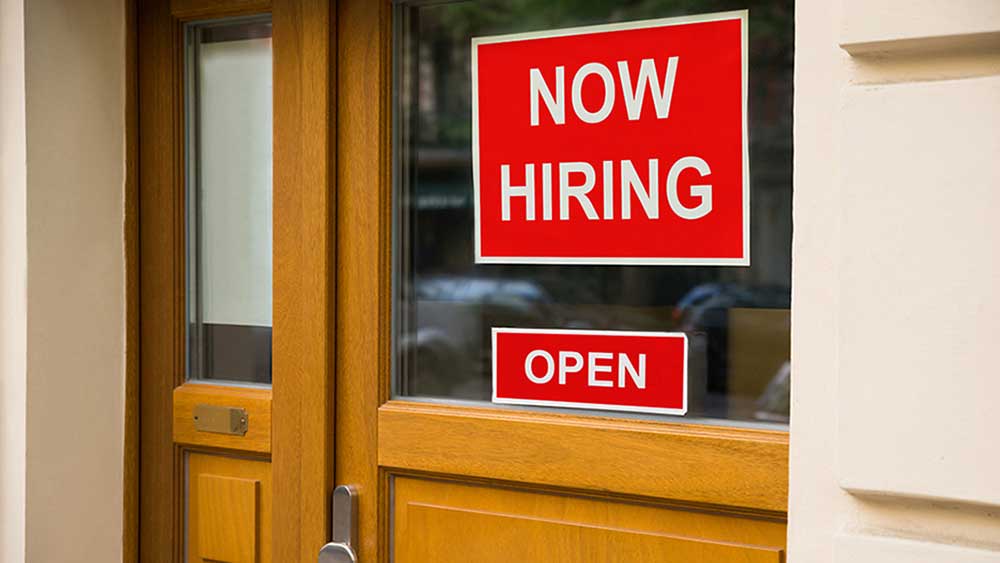Job growth remained firm in November, as employers added 263,000 payroll positions while the unemployment rate held at 3.7% and wages jumped. The stronger-than-expected report probably won’t change expectations for a half-point Federal Reserve rate hike on Dec. 14, but it could lead the Fed to offer a more hawkish outlook. After the jobs report, the Dow Jones Industrial Average fell in morning trade.
X
Jobs Report Hits And Misses
Employment gains topped Wall Street’s 200,000 forecast, as the private-sector added 221,000 jobs and government added 42,000 positions.
The average hourly wage rose 0.6% on the month, doubling 0.3% expectations. Annual wage growth of 5.1% topped forecasts of 4.6% and accelerated from October’s upwardly revised 4.9%.
Job gains for September and October were revised down by a combined 23,000.
The unemployment rate was expected to hold at 3.7%. This month’s 48,000 increase in the number of unemployed workers came as 186,000 people left the labor force, meaning they’re no longer working or looking for work. The ranks of the employed fell by 138,000 after declining by 328,000 in October.
The share of the working age population (age 16 and up) participating in the labor force unexpectedly fell to 62.1%.
The headline job and wage figures come from the Labor Department’s monthly survey of employers. The separate household survey details labor force participation, work status and the unemployment rate.
Dow Jones, Treasury Yield Reaction
The Dow Jones fell 0.7% in early Friday stock market action. The S&P 500 lost 0.9%, while the Nasdaq composite slid 1.2%.
The 10-year Treasury yield, which had fallen to its lowest level since late September, rose 4 basis points to 3.57%.
Wall Street had a largely positive reaction to Fed chief Jerome Powell’s expansive speech on the evolving inflation outlook Wednesday. Through Thursday’s close, the Dow had edged up 0.1% this week. The S&P 500 climbed 1.25%, retaking its 40-week moving average, and the Nasdaq composite 2.3%.
Whether Powell’s speech ultimately turns out to be bullish depends in large part on what happens to wage growth. Powell said that 3.5% annual wage gains are roughly consistent with 2% inflation. The apparent moderation in wage growth ahead of Friday’s jobs report probably accounted for Wall Street’s positive reaction to the speech. But the November jobs report showed earnings ramping up again. If wage growth proves stubbornly high, a recession may be unavoidable.
Be sure to read IBD’s The Big Picture every day to stay in sync with the market direction and what it means for your trading decisions.
The Dow has rallied just under 20% from its Sept. 30 closing low to climb within 6.5% of its all-time closing high. The S&P 500 has cut its bear-market loss roughly in half, sitting 15% below its record closing high and 14% above its 52-week low on Oct. 12. The Nasdaq is up 11.25% from its recent low, but still 28.5% below its peak.
Jobs Report Details
The leisure and hospitality sector added 88,000 jobs. Factory employment grew by 14,000.
Construction jobs rose by 20,000. Health care and social assistance payrolls rose 68,000. Retailers trimmed a seasonally adjusted 30,000 jobs, while transportation and warehousing jobs fell 15,000.
Please follow Jed Graham on Twitter @IBD_JGraham for coverage of economic policy and financial markets.
YOU MAY ALSO LIKE:
These Are The 5 Best Stocks To Buy And Watch Now
Join IBD Live Each Morning For Stock Tips Before The Open
IBD Digital: Unlock IBD’s Premium Stock Lists, Tools And Analysis Today
Image and article originally from www.investors.com. Read the original article here.

